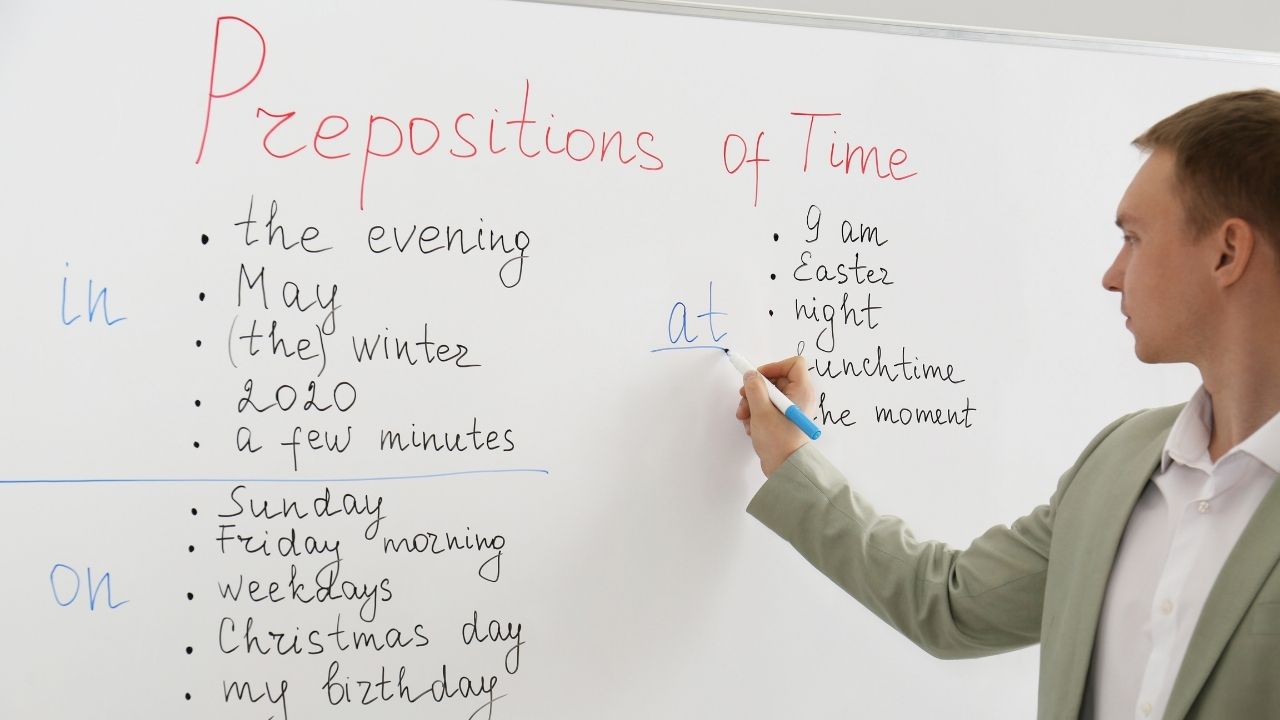Table of Contents
Welcome to our blog post on prepositions! Have you ever wondered how we describe relationships and spatial concepts in English? Well, look no further because this article will provide you with a comprehensive list of essential prepositions that can help you navigate the intricacies of the English language. Whether you are a native speaker looking to brush up on your grammar or a non-native speaker trying to master these crucial words, this guide is for you. So let’s dive in and explore the fascinating world of prepositions together!
The Importance of Prepositions
Prepositions may seem like small and insignificant words, but their importance in language cannot be overstated. These tiny words are essential for describing relationships between nouns, indicating location or direction, and expressing spatial concepts. Without prepositions, our language would lack clarity and precision.
Consider the sentence “I am going to the store.” The preposition “to” tells us the direction of movement – from where we currently are to where we want to go. Similarly, in the sentence “The book is on the table,” the preposition “on” indicates the position of the book relative to the table.
Prepositions provide context and give depth to our communication. They help us paint a vivid picture with our words and enable others to understand exactly what we mean. Imagine reading a story without any prepositions; it would be confusing and challenging to visualize what’s happening.
Moreover, mastering prepositions is crucial for effective written communication. Whether you’re writing an email, a report or even a blog post like this one, proper use of prepositions ensures that your ideas are conveyed accurately and comprehensively.
To truly grasp how to use prepositions correctly, it takes practice and exposure in various contexts. Reading extensively can help familiarize yourself with different examples of how these words are used naturally within sentences. Additionally, actively listening to native speakers using prepositional phrases will enhance your understanding.
Here are some tips for learning prepositions:
– Create flashcards with example sentences that include different types of prepositional phrases.
– Practice using them in conversations with friends or language partners.
– Look up idiomatic expressions that contain specific prepositions.
– Use online resources such as quizzes or exercises designed specifically for learning/preposition practice.
By investing time into studying and practicing these important little words called ‘prepositions’, you’ll not only improve your overall comprehension but also communicate more effectively in both spoken conversation and written text!
Remember, learning prepositions is an ongoing process. The more you expose yourself to them, the more natural and accurate your preposition usage will become.
A List of Common Prepositions
Prepositions are an essential part of the English language, helping us describe relationships and spatial concepts. By understanding and using prepositions correctly, we can convey precise information about the position, direction, or time in a sentence.
Here is a list of common prepositions that will help you enhance your vocabulary and improve your writing skills:
1. About: He was talking about his new project.
2. Above: The birds flew above the trees.
3. Across: She walked across the bridge to reach the other side.
4. Against: The football team played against their rivals.
5. Along: They strolled along the beach at sunset.
6. Among: There was a sense of camaraderie among the teammates.
7. Around: We sat around the campfire telling stories.
8. At: I’ll see you at 7 o’clock tonight.
9. Before: Please arrive before noon for our meeting.
10. Behind:I found my keys behind the couch cushions.
Remember to use these prepositions with accuracy and precision in order to express yourself clearly and effectively!
Learning how to properly use prepositions takes practice, but there are some tips that can help make it easier:
1. Read extensively – Pay attention to how authors use prepositions in different contexts.
2. Practice with exercises – Complete grammar exercises dedicated solely to practicing preposition usage.
3. Take note of commonly used phrases – Make note of phrases that frequently use specific prepositions so you can remember them easily.
How to Use Prepositions
Prepositions are tiny words that can have a big impact on the meaning and clarity of a sentence. Understanding how to use prepositions correctly is crucial for effective communication. Here are some tips to help you master the art of using prepositions.
1. Choose the right preposition: Prepositions often indicate relationships between people, objects, or places. To choose the correct preposition, consider the specific relationship you want to convey. For example, “I went to the store” implies movement towards a destination, while “I am at the store” suggests location.
2. Pay attention to verb-preposition combinations: Some verbs require specific prepositions after them. For instance, we say “listen TO music,” not “listen OF music.” Learning these combinations will enhance your fluency in English.
3. Consider context: The same preposition might be used differently depending on context. For example, “She walked over the bridge” describes crossing from one side of a bridge to another, while “He jumped over his opponent” suggests leaping above someone during a physical activity.
4. Practice with examples: Familiarize yourself with common phrases and expressions that use prepositions by reading and listening extensively in English. You could also create sample sentences using different prepositions to deepen your understanding.
5. Expand your vocabulary: By learning new words and their associated prepositional usage patterns, you can add depth and versatility to your language skills.
Remember that mastering how to use prepositions takes time and practice! Don’t hesitate to seek out additional resources or ask native speakers for guidance along your language-learning journey
Tips for Learning Prepositions
Learning prepositions can sometimes be challenging, especially for non-native English speakers. However, with the right approach and some helpful tips, you can enhance your understanding and usage of these important words.
1. Contextualize: One effective way to learn prepositions is by putting them into context. Instead of memorizing isolated examples, try to understand how prepositions are used in real-life situations or sentences.
2. Visualize: Many prepositions are related to spatial concepts. To better grasp their meanings, visualize the relationships between objects or imagine yourself in different scenarios where those prepositions would be commonly used.
3. Use mnemonic devices: Mnemonics can be a great tool for remembering tricky preposition pairs such as “in” and “on,” or “at” and “to.” Create mental associations or come up with memorable phrases that will help you recall their correct usage.
4. Practice through reading and writing: Engaging with written material that includes various examples of prepositions will expose you to their usage patterns naturally. Read books, articles, or even online forums – anything that exposes you to diverse sentence structures incorporating different prepositions.
5. Utilize online resources: Take advantage of interactive exercises available on language learning websites or apps specifically designed for practicing grammar skills like using prepositions correctly.
6. Seek feedback from others: Don’t shy away from seeking feedback from native speakers or language teachers who can provide guidance on improving your use of prepositional phrases.
Remember that learning any aspect of a new language takes time and practice; so don’t get discouraged if it feels overwhelming at first! By implementing these tips consistently over time, your understanding and fluency with English preposition usage will undoubtedly improve.
Conclusion
Mastering prepositions is essential for effective communication and understanding spatial concepts. By using the right preposition, you can accurately describe relationships between objects and their positions in space. With a wide range of common prepositions to choose from, it may seem overwhelming at first. However, with practice and the tips mentioned above, you can confidently navigate through this aspect of grammar.
Remember to familiarize yourself with the list of common prepositions provided in this article. Take note of their meanings and usage patterns to ensure accurate placement in your sentences. Additionally, be mindful of context when using prepositions as some words may have multiple meanings depending on how they are used.
Learning prepositions does not need to be daunting or boring. Engage in fun activities like word games or visual aids that allow you to associate different prepositions with specific situations or images. The more you immerse yourself in practicing these words, the better equipped you will become at incorporating them naturally into your spoken and written English.
By mastering the use of prepositions and expanding your vocabulary with commonly used ones, you will enhance your ability to express ideas clearly and precisely while navigating spatial relationships effectively within English language contexts! So go ahead – dive into learning those crucial little words that pack a big punch!











